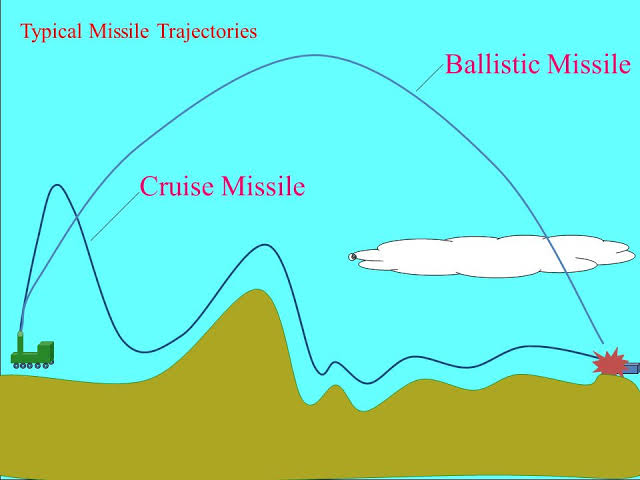Table Of Content

After the collapse of the Soviet Union, the most recent cruise missile developed was the Kalibr missile which entered production in the early 1990s and was officially inducted into the Russian arsenal in 1994. However, it only saw its combat debut on 7 October 2015, in Syria as a part of the Russian military campaign in Syria. The missile has been used 14 more times in combat operations in Syria since its debut. These missiles are about the same size and weight and fly at similar speeds to the above category. The U.S. achieved great success with a 4.5-inch rocket, three or four of which were carried under each wing of Allied fighter planes.
Military rockets
Propulsion is generally provided by small gas turbine jet engines, though some of the newer, supersonic types are powered by solid fuel ramjet engines. Some of the best known cruise missiles are the AM39 Exocet anti-ship missile or the BGM-109 Tomahawk missile. Strategic missiles represent a logical step in the attempt to attack enemy forces at a distance. As such, they can be seen as extensions of either artillery (in the case of ballistic missiles) or military aircraft (in the case of cruise missiles).
Cruise Missiles vs Ballistic Missiles
Unlike ballistic missiles, which arc up into space before traveling back down towards earth, cruise missiles fly close to the ground, making it hard for radar on the ground that’s pointed up at space to see them. Most historians of rocketry trace the development to China, a land noted in ancient times for its fireworks displays. Drawings made in military documents much later show powder rockets tied to arrows and spears.
How are cruise missiles different from ballistic missiles?
Both missile types are configurable for either conventional or nuclear warheads. The United States, Russia, North Korea, India, Iran, South Korea, Israel, France, China and Pakistan have developed several long-range subsonic cruise missiles. Earlier versions of these missiles used inertial navigation; later versions use much more accurate TERCOM and DSMAC systems. Between 1957 and 1961 the United States followed an ambitious and well-funded program to develop a nuclear-powered cruise missile, Supersonic Low Altitude Missile (SLAM). It was designed to fly below the enemy's radar at speeds above Mach 3 and carry hydrogen bombs that it would drop along its path over enemy territory.
Efficiency in modern warfare
World leaders urge Israel not to retaliate on Iran: Latest - The Associated Press
World leaders urge Israel not to retaliate on Iran: Latest.
Posted: Tue, 16 Apr 2024 04:05:00 GMT [source]
Travels only in endo atmosphere, and move parallel to earth’s surface therefore airborne radars are completely effective in detecting them. Britain, Germany, the Soviet Union, Japan, and the United States all developed airborne rockets for use against surface as well as aerial targets. These were almost invariably fin-stabilized because of the effective aerodynamic forces when launched at speeds of 250 miles per hour and more. Tube launchers were used at first, but later straight-rail or zero-length launchers, located under the wings of the airplane, were employed.
Many ground forces continued to field truck-mounted, tube-launched rockets that could be fired simultaneously in salvos or ripple-fired in rapid succession. Such artillery rocket systems, or multiple-launch rocket systems, generally fired rockets of 100 to 150 millimetres in diameter and had ranges of 12 to 18 miles. The rockets carried a variety of warheads, including high explosive, antipersonnel, incendiary, smoke, and chemical. Part of the broader appeal of hypersonic weapons to nations like Russia, China, and the United States is that the speed and trajectories of the missiles make them harder to detect than ICBMs. The ballistic arc of ICBMs means the launch is visible to radar while it is still ascending, once it clears the horizon line. A missile is a rocket-powered weapon that is meant to deliver an explosive warhead with high speed and precision.
Rockets were used in a limited way in the American Civil War (1861–65), but reports are fragmentary, and apparently they were not decisive. The U.S. Ordnance Manual of 1862 lists 16-pound Hale rockets with a range of 1.25 miles. In 1815 Congreve further improved his designs by mounting his guide stick along the central axis. The rocket’s propulsive jet issued through five equally spaced holes rather than a single orifice. The forward portion of the guide stick, which screwed into the rocket, was sheathed with brass to prevent burning. Following table mentions difference between ballistic missile and cruise missile withrespect to various specifications/features.

The missile continues to ascend toward the highest point in its trajectory, and then begins to descend toward Earth. This is the longest phase of a missile’s flight; for ICBMs, it can last around 20 minutes. During midcourse phase, ICBMs can travel around 24,000 kilometers per hour (15,000 miles per hour). The terms ‘ballistic missile’ and ‘cruise missile’ appear in news articles wherever there is a missile test. It is essential for us to understand these terms to understand various Indian missile defence systems. In 2017, North Korea unexpectedly staged a test launch of what was then a new ballistic missile, the Pukguksong-2.
Ballistic Missiles
There were no casualties and Iran's Foreign Minister Mohammad Javad Zarif defended the missile strike on the U.S. bases in Iraq, saying it was an act of "self-defense." Ballistic missiles on the other hand are not powered during most of their flight. During the launch they are given a high initial velocity and then coast throughout most of their flight.
U.S. Warships in Eastern Mediterranean Down Iranian Ballistic Missiles - USNI News - USNI News
U.S. Warships in Eastern Mediterranean Down Iranian Ballistic Missiles - USNI News.
Posted: Mon, 15 Apr 2024 02:23:00 GMT [source]
Their ability to navigate and adapt during flight provides them with a high degree of accuracy. Modern cruise missiles are capable of traveling at high subsonic, supersonic, or hypersonic speeds, are self-navigating, and are able to fly on a non-ballistic, extremely low-altitude trajectory. Ballistic missiles weapons are separate from cruise missiles, which fly in powered flight and are aerodynamically guided. A cruise missile is a guided missile used against terrestrial targets that stays in the atmosphere and travels the majority of its flight route at a steady speed. Cruise missiles are built to deliver a heavy warhead across vast distances with pinpoint accuracy.
Thus in such missiles the trajectory has to be fully determined by a given initial velocity, effects of gravity, air resistance and earth's motion. The suitability of cruise or ballistic missiles depends on the mission. Cruise missiles excel at precision strikes, while ballistic missiles offer long-range and high-speed capabilities for strategic objectives. Recently North Korea continued its weapons testing, firing cruise missiles amidst escalating tensions and “war preparations” against South Korea. Know the Difference between Cruise and Ballistic Missiles in This article.

In that year, a German colonel designed a rocket weighing 132 pounds (60 kilograms); it was constructed of wood and wrapped in glue-soaked sailcloth. Nevertheless, the use of rockets seems to have waned, and for the nxt 100 years their employment in military campaigns appears to have been sporadic. Rocket is a general term used broadly to describe a variety of jet-propelled missiles in which forward motion results from reaction to the rearward ejection of matter (usually hot gases) at high velocity. The propulsive jet of gases usually consists of the combustion products of solid or liquid propellants. The first successful launch of a V-2 occurred on October 3, 1942, and it commenced operations against Paris on September 6, 1944, followed by an attack on London two days later. More than 3,000, V-2s had been launched by the end of World War II in Europe in May 1945.
Some cruise missiles can even be guided into their target by remote operators using cameras on the weapon’s nose, again, not unlike piloting a drone or UAV. Cruise missiles are self-propelled for the majority of their time in the air, flying in a relatively straight line and at lower altitudes thanks to a rocket propellant. Think of a ballistic missile's flight path as a large arc up and back down again, while that of a cruise missile — fired from a warship, for instance — is closer to a straight line. Here in the above article, we talked about ballistic missiles and cruise missiles and the differences between them.
